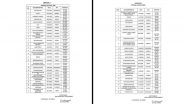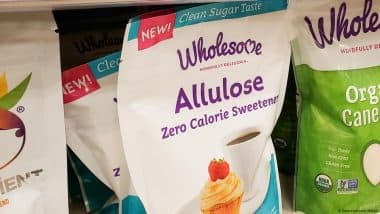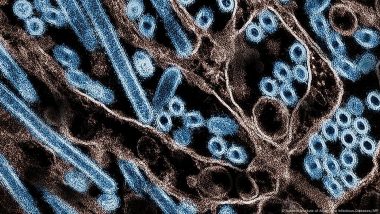More than 150 UK schools have been closed so far over safety concerns. Experts warn of a safety issue on a global scale, with buildings at risk of collapse due to the use of RAAC concrete that is prone to crumbling.Reinforced autoclaved aerated concrete, or RAAC, is a type of concrete used in roof structures and cladding.
Also Read | Wolf: Good for Nature Recover, but Danger for Humans.
"RAAC was used in the UK and many European countries for public buildings in particular because it was quick to construct and low-cost," said Alice Moncaster, Professor of Sustainable Construction at the University of the West England, UK.
Also Read | NASA Scientists Spot Sun-Like Star Being Devoured by a Hungry Black Hole.
The UK government has closed more than 150 schoolsdue to safety risks. Hospitals, university buildings and courts, are also believed to contain the material.
Experts told DW this is a safety concern for every country that used RAAC in construction, not just the UK.
"RAAC is very commonly used in buildings all across Europe. It's used most commonly in public sector buildings like schools, but also in commercial properties," said Adrian Tagg, Associate Professor in Building Surveying at the University of Reading, UK.
"Believe me, if you've started to conduct to look for this material in buildings in other countries, you will find similar problems," Tagg told DW.
RAAC safety concerns growing for decades
Experts first raised concerns about RAAC in the 1990s, saying the material deteriorateswithin decades after its construction. In the 2000s, more concerns were raised that the material was reaching the end of its 30 year shelf life.
"RAAC has been a concern for a while, but it has only recently hit the press. West Suffolk Hospital, built in the 1970s, is the most notorious example. It has for many years had ceilings held up with props," Moncaster told DW.
In 2018, a school roof in the UK collapsed due to serious corrosion of the material. Another roof collapse in August 2023 led the UK government to announce the closure of a number of schools.
"Thankfully we haven't had any fatalities yet from roofs collapsing, but we need investigations to ensure the safety of all buildings at risk," said Tagg.
How does RAAC corrode?
RAAC was developed in the 1920s. It's a lightweight, prefabricated concrete reinforced with steel bars to give it tensile strength.
The material is coated in waterproof layers, but if the material becomes exposed to the elements through lack of maintenance, moisture causes the concreteand inner steel reinforcements to corrode.
"As with any material, RAAC is expected to be replaced after a certain design life. There is nothing intrinsically unsafe about RAAC – it had a design life which has now been exceeded," Moncaster said.
Defects in RAAC are exacerbated by poor building maintenance and frequent safety checks, Tagg said.
"This problem is a result of building maintenance being a lower priority in terms of building occupancy," Tagg said.
RAAC corrosion not just a UK safety concern
Experts are calling for large-scale building surveying and safety inspections to determine whether RAAC concrete has been used in their construction, and if so, what condition they are in.
In the UK alone, tens of thousands of government and privately owned buildings are expected to contain the material, although only a small percentage will be an immediate safety concern.
Tagg emphasized that the issues in the UK should concern all countries with a history of using RAAC in construction.
"We need widespread audits of buildings in countries for their proactive maintenance. This is what countries had to do to find asbestos," Tagg said.
"Of course the wet and increasingly stormy weather makes it worse [in the UK] — but the changing climate across Europe has made many regions wetter than before, so again this isn't just the UK," said Moncaster.
Edited by:
(The above story first appeared on LatestLY on Sep 08, 2023 07:30 PM IST. For more news and updates on politics, world, sports, entertainment and lifestyle, log on to our website latestly.com).












 Quickly
Quickly




















